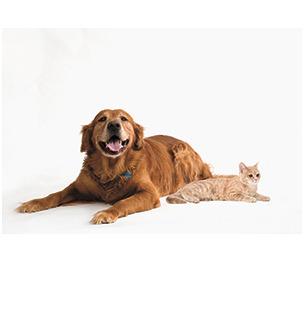You’re getting ready for work and your pet suddenly collapses – what do you do? Your house is filled with guests and your dog starts choking and gasping for air – do you know what to do?
Part one of this two-part series on at-home emergency care discussed first aid basics and resources for emergency preparedness. Part two discusses specifics techniques that may avert a tragedy in the precious seconds of an emergency situation. If you’ve been trained in Pet CPR, fantastic; but if you don’t know CPR or if it fails to work, the following simple acupressure point might help.
If your pet collapses, stops breathing and has no heartbeat, stimulating an acupressure point forresuscitation located beneath the nose in the slit above the upper lip can actually trigger your pet to take a breath. Known in Chinese medicine as Governing Vessel 26, many believe it is the most important acupressure point in an emergency situation. Activate this point with a series of staccato jabs with a fingernail or sharp pen to stimulate the production of epinephrine. Press down to the bone and wiggle it back and forth. Continue until you reach the veterinarian or until your pet revives.
In “The First Aid Companion for Dogs and Cats,” Amy Shojai writes, “Veterinarians agree that a single acupressure point could revive your pet because stimulating this point releases natural adrenalin (epinephrine).”
“This technique has been successfully used to re-start the heart, stimulate breathing, and save lives,” says MaryEllen Elcock of Creekside Critter Care, a first aid instructor. This point should not be stimulated on a conscious animal or you risk being bitten.
Dogs love to chew, but that chewing pleasure can quickly change to panic if that object gets lodged in your pet’s throat. A choking dog may paw at her mouth, cough forcefully or thrash wildly before losing consciousness. Carefully open the dog’s mouth with both hands. Look inside the mouth for a visible foreign object and gently remove with your fingers if possible. Tweezers may be helpful.
If you cannot remove the object or if your pet is unconscious, Pet MD recommends the following. For small dogs, “Pick up the dog by its thighs and gently shake and swing it. If symptoms do not improve, apply forward pressure to the abdomen just behind the ribcage.” For large dogs, “If the dog is standing, put your arms around her belly, joining your hands. Make a fist and press firmly up and forward, just behind the ribcage. If the dog is lying down, place one hand on the back for support and use the other hand to squeeze the abdomen upwards and forwards. Remove any objects that may have been dislodged.”
If the object is removed but your pet is not breathing, the above acupressure point and CPR may be necessary. Regardless if the object is removed, your pet will need immediate veterinary care to assess damages.
These at home techniques can save your pet’s life in the crucial seconds of an emergency, but should not delay the comprehensive medical care provided at your veterinary clinic.
This article was provided by Cobber’s Pet Pantry, 1415 Blake St. in Enumclaw. The shop can be reached at 360-825-7387. Website: cobberspetpantry.com.



